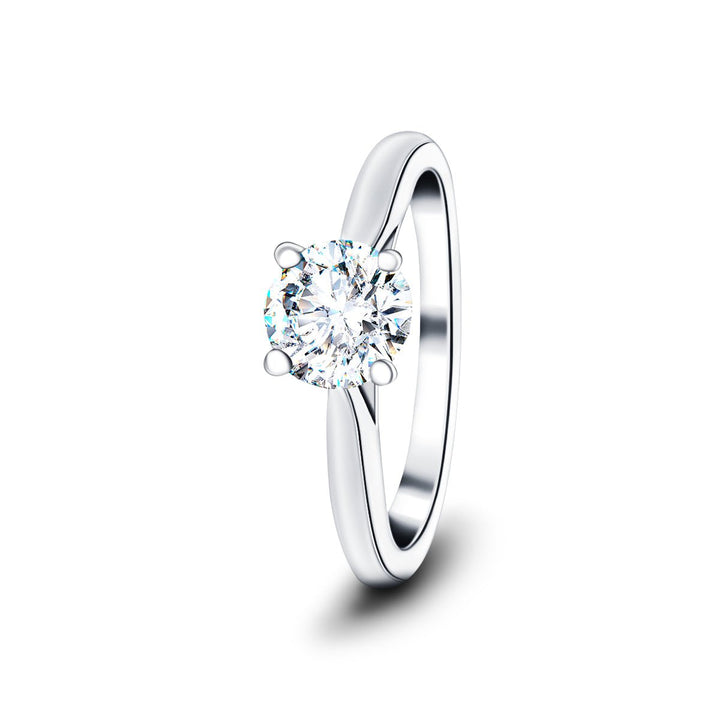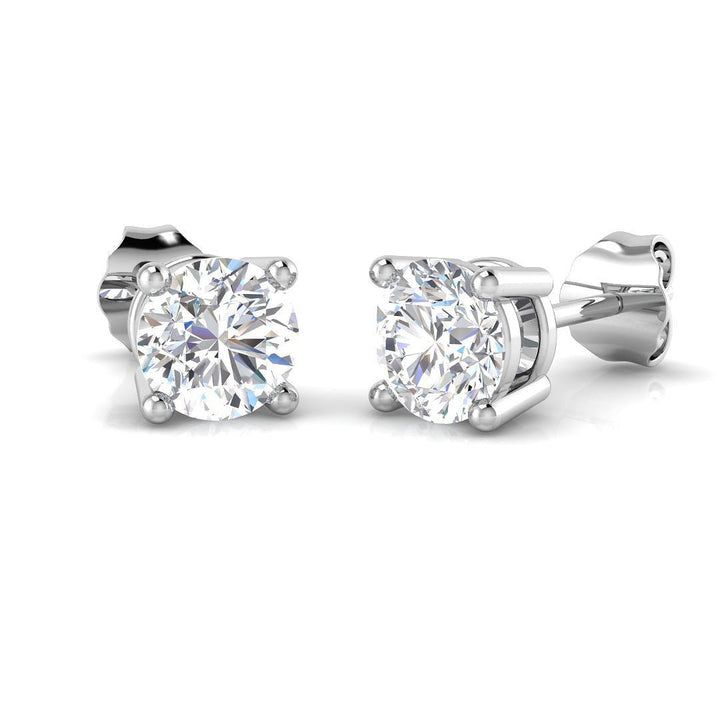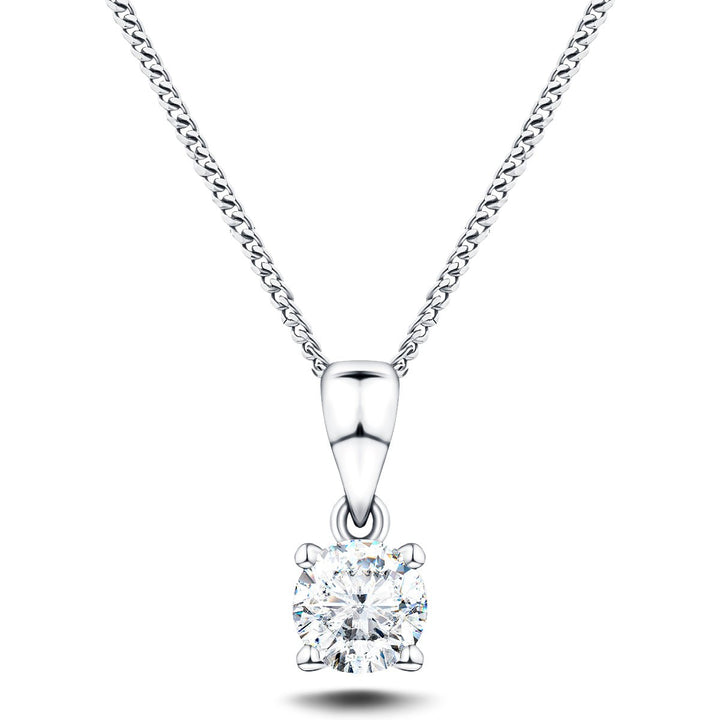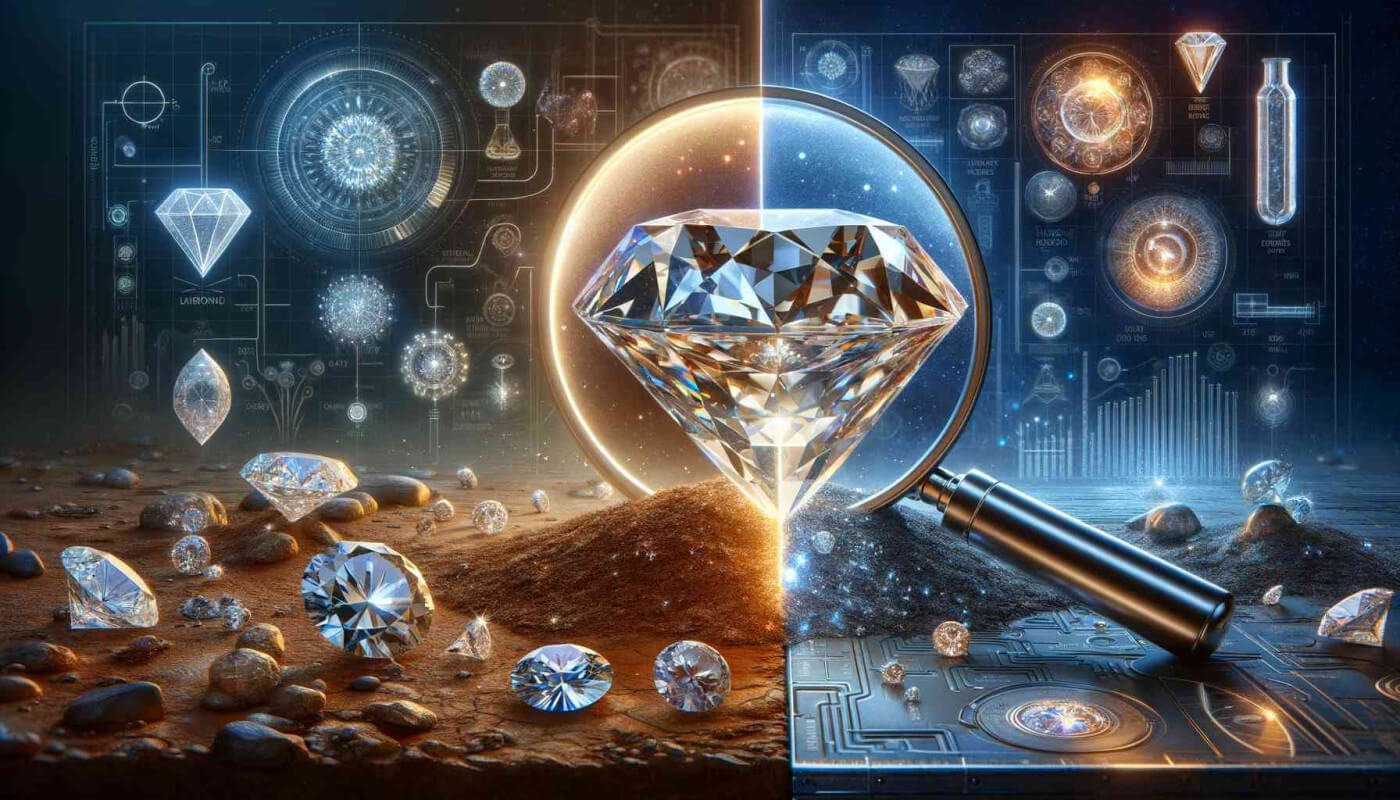With the increasing popularity of synthetic diamond jewellery, many consumers are left wondering about its true value. Are lab-grown diamonds a smart investment? Do they possess the same quality and durability as natural diamonds? And what about the ethical and environmental concerns surrounding their production?
In this article, we delve into the minds of consumers, seeking insights and answers to the question: What do consumers really think of synthetic diamond jewellery?
Key Takeaways About Synthetic Diamond Jewellery
- Synthetic diamond jewellery is more affordable compared to natural diamonds, leading to increasing market demand.
- Lab-grown diamonds have exceptional quality and durability, with the same physical and chemical properties as natural diamonds.
- Consumers are drawn to the high quality and lower price of lab-grown diamonds compared to natural diamonds.
- Synthetic diamond jewellery offers ethical and environmental benefits, including being conflict-free and having a lower environmental impact.
Ella Lab Diamond Solitaire Engagement Ring 2.00ct G/VS 18k White Gold

£1,955.00
£3,731.00
Make your love sparkle with the Ella Lab Diamond Solitaire Engagement Ring, expertly crafted in the UK with 18k white gold. This ring features a breathtaking a 2.00-carat G/VS lab-grown diamond that will light up any room. IGI-certified and UK-hallmarked,… read more
Price Comparison With Natural Diamonds
Consumers find synthetic diamond jewellery to be more affordable compared to natural diamonds. This price advantage has contributed to the increasing market demand for synthetic diamond jewellery. As the availability and accessibility of synthetic diamonds in the market have improved, consumers have become more inclined towards purchasing these alternatives.
One of the key factors driving the market demand for synthetic diamond jewellery is the price difference. Natural diamonds are known for their rarity, making them significantly more expensive. On the other hand, synthetic diamonds are created in a laboratory, allowing for a more controlled and cost-effective production process. This, in turn, translates into lower prices for consumers.
Moreover, the availability and accessibility of synthetic diamonds have made them more appealing to a wider audience. In the past, natural diamonds were often seen as a luxury item, reserved for special occasions or the wealthy. However, with the rise of synthetic diamonds in the market, more people now have the opportunity to own diamond jewellery without breaking the bank.
Quality and Durability of Lab-Grown Diamonds
Lab-grown diamonds are renowned for their exceptional quality and durability. These man-made diamonds are created in a controlled environment using advanced technology, resulting in diamonds that have the same physical and chemical properties as natural diamonds. They are also indistinguishable to the naked eye, making them an attractive alternative for consumers who desire the beauty and brilliance of a diamond without the high price tag.
One of the key advantages of lab-grown diamonds is their long-term affordability. As the technology for producing these diamonds continues to improve and become more efficient, the cost of production decreases, making lab-grown diamonds more accessible to a wider range of consumers. This affordability factor has contributed to the increasing market demand for lab-grown diamonds, as consumers are drawn to their high quality and lower price compared to natural diamonds.
To further illustrate the quality and durability of lab-grown diamonds, the following table provides a visual representation of the key characteristics of these diamonds compared to natural diamonds:
| Characteristic | Lab-Grown Diamonds | Natural Diamonds |
| Quality | Exceptional | Exceptional |
| Durability | Excellent | Excellent |
| Price | Affordable | Expensive |
| Origin | Man-made | Mined |
| Availability | Increasing | Limited |
Perceived Value and Investment Potential
The perceived value and investment potential of synthetic diamond jewellery are influenced by various factors.
One of the key factors is the perceived aesthetics of the jewellery. Consumers often associate value with the appearance of diamonds, and their perception of synthetic diamonds may differ from that of natural diamonds. While synthetic diamonds can be chemically and physically identical to their natural counterparts, some consumers may still value natural diamonds more due to their traditional allure and rarity.
Consumer preferences also play a significant role in determining the perceived value and investment potential of synthetic diamond jewellery. Some consumers may prioritize the ethical and environmental aspects of lab-grown diamonds, which can enhance the perceived value for those who value sustainability. On the other hand, consumers who value the rarity and exclusivity of natural diamonds may perceive synthetic diamonds as less valuable.
Furthermore, the investment potential of synthetic diamond jewellery can be influenced by market trends and demand. Currently, the market for synthetic diamonds is growing, and this increased demand may contribute to their investment potential. However, it's important to note that the value of any investment, including synthetic diamond jewellery, can be subject to fluctuations in the market.
Ultimately, the perceived value and investment potential of synthetic diamond jewellery depend on individual consumer preferences and market dynamics.
Ethical and Environmental Concerns
Concerns regarding the ethics and environmental impact of synthetic diamond jewellery have gained significant attention among consumers. As consumers become more conscious of sustainability concerns and the impact of their purchasing decisions, they're increasingly seeking out information about the ethical and environmental practices of the diamond industry.
Here are four key points to consider:
1. Conflict-free: Consumers are concerned about the origin of their diamonds and whether they're sourced from conflict zones. Synthetic diamonds offer a guarantee of being conflict-free, as they're grown in a controlled laboratory environment.
2. Environmental impact: Synthetic diamonds have a lower environmental impact compared to mined diamonds. The mining process for natural diamonds requires large-scale excavation and can cause soil erosion, water pollution, and habitat destruction. In contrast, synthetic diamonds are created using sustainable manufacturing processes.
Lab Diamond Solitaire Stud Earrings 3.00ct G/VS in 18k White Gold

£1,295.00
£4,121.00
Indulge in luxury with the stunning Lab Diamond Solitaire Stud Earrings, featuring a 3.00ct G/VS-graded round solitaire diamond in a claw setting. The 18k white gold setting exudes elegance and sophistication, making these earrings a must-have for any special occasion.… read more
3. Labour practices: There are concerns about labour practices in the diamond mining industry, including issues such as child labour and unsafe working conditions. Synthetic diamonds offer an alternative that ensures fair labour practices and safe working environments.
4. Transparency: Consumers want transparency in the diamond industry, including information about the sourcing and manufacturing processes. Synthetic diamond producers are often more transparent about their operations, providing consumers with peace of mind.
Cultural Acceptance and Social Perception
Consumers widely embrace synthetic diamond jewellery, recognizing its cultural acceptance and positive social perception. In today's society, cultural significance plays a significant role in shaping fashion trends. Synthetic diamond jewellery has gained popularity as it aligns with the values of the modern consumer who seeks ethical and sustainable alternatives. As a result, it has become socially acceptable to wear synthetic diamond jewellery, and it's seen as a symbol of conscious consumerism.
The cultural significance of synthetic diamond jewellery lies in its ability to challenge the traditional notion of luxury and exclusivity. In the past, natural diamonds were considered the epitome of status and wealth. However, with the increasing awareness of the environmental and ethical concerns associated with natural diamonds, consumers are shifting their preferences towards synthetic alternatives.
Moreover, the positive social perception of synthetic diamond jewellery is rooted in its association with responsible consumption and environmental consciousness. Wearing synthetic diamond jewellery not only allows individuals to express their personal style but also showcases their commitment to sustainability. It serves as a statement of individuality and progressive thinking, reflecting the values of a society that prioritizes ethical choices.
Frequently Asked Questions About Synthetic Diamonds
How Are Synthetic Diamonds Different From Natural Diamonds in Terms of Their Physical Characteristics and Properties?
Synthetic diamonds differ from natural diamonds in their physical characteristics and properties. The distinguishing factors include their origin, composition, and growth process. Understanding these differences is crucial when comparing synthetic and natural diamond jewellery.
Can Synthetic Diamonds Be Differentiated From Natural Diamonds by Trained Gemologists or Laboratory Testing?
When it comes to differentiating synthetic diamonds from natural ones, trained gemologists and laboratory testing can play a crucial role. However, market acceptance of synthetic diamond jewellery may vary depending on individual consumer preferences and perceptions.
Lab Diamond Solitaire Necklace Pendant 0.70ct G/VS in 9k White Gold

£565.00
£1,076.00
A Lab Diamond Solitaire Necklace Pendant is a gorgeous way to blend luxury and style. The pendant features a round claw-set 0.70-carat G/VS-certified lab-grown diamond and is made of 9k white gold. This necklace comes with a lifetime workmanship guarantee,… read more
Are There Any Limitations or Drawbacks to Purchasing Synthetic Diamond Jewellery in Terms of Design Options or Customization?
Design limitations and customization options are important factors to consider when purchasing synthetic diamond jewellery. Consumers may find that there are fewer design options available compared to natural diamonds, but customization options can still provide a sense of individuality and personalization. Any lack of customisation is not due to the diamonds themselves, but rather to the choices of designers and jewellers. At After Diamonds, we offer a range of jewellery customisation options
Real Diamonds, Real Choices, Real Value!
It is evident that consumers have a positive perception of synthetic diamond jewellery. The affordability, exceptional quality, and ethical and environmental benefits of lab-grown diamonds have made them a popular choice among consumers.
For those who value the prestige and symbolism associated with diamonds, it is worth exploring the range of real diamond jewellery designed and sold by After Diamonds. By offering a diverse selection of high-quality diamond pieces, After Diamonds meets the preferences and needs of all consumers. Check out our collection today and discover the beauty and elegance of real diamond jewellery.






